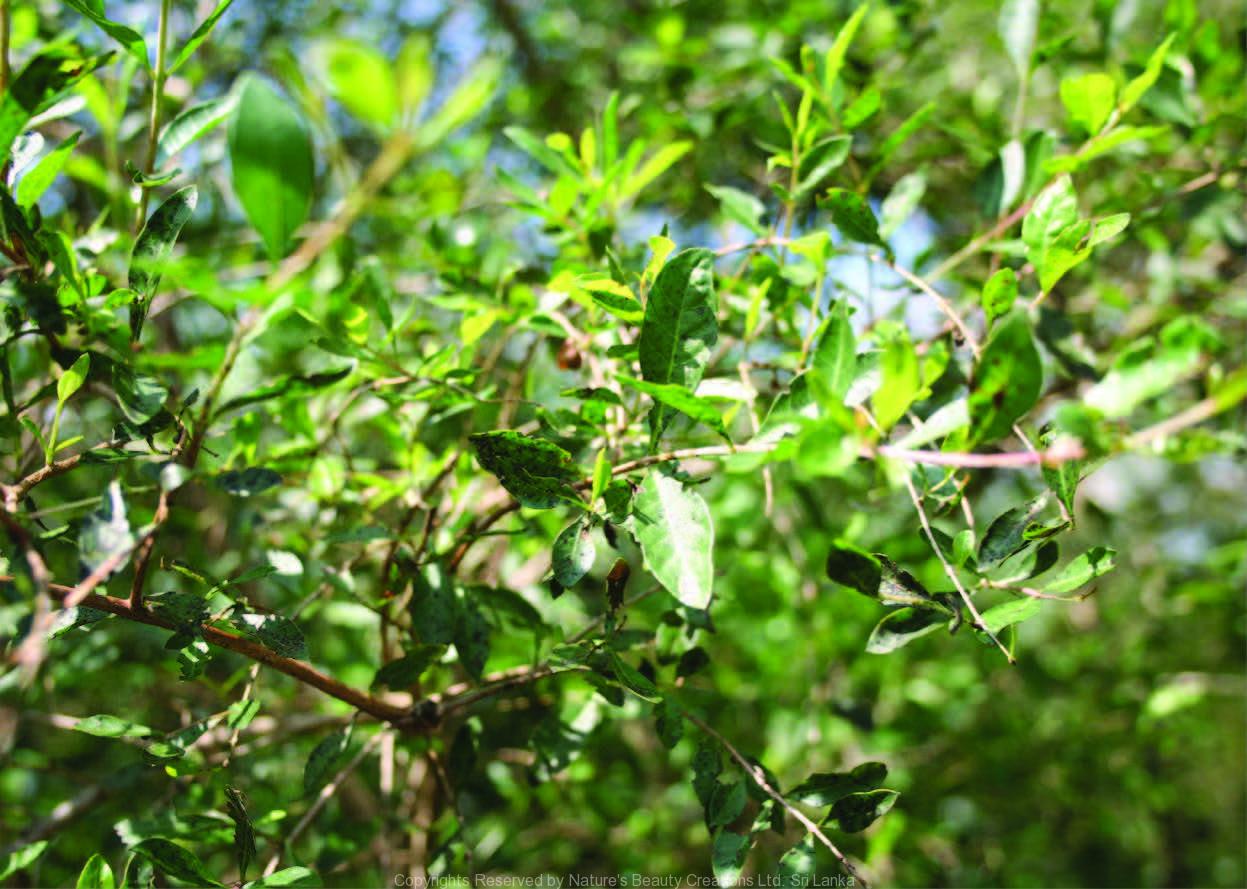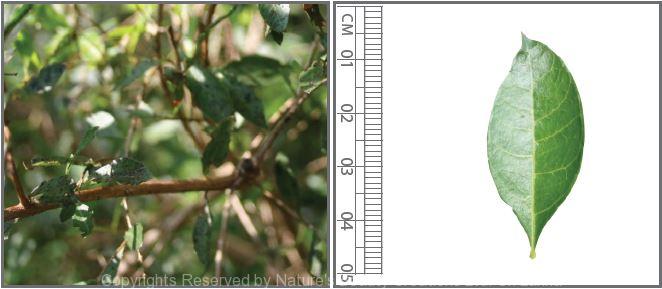

Traditional Knowledge
Useful plant parts :
Leaf, root, bark, flower and fruit
Uses in traditional medicine :
- Decoction of the root is taken for intestinal worms in children
- Decoction of the bark is given for jaundice as a liver tonic
- Leaves are boiled in water with lime fruit pieces and used as a hair wash for grey hair
- Leaves stimulate hair growth
- Roots are used to treat hysteria, leprosy and nerve disorders
- Flowers are sudorific
- Flowers and fruits possess emmenagogue properties
Scientific Research
Chemical constituents:
Naphthaquinones: Lawsone and dioxin derivatives from aerial parts; phenolic glucosides: lawsoniaside A, B and lalioside from leaves; xanthones: laxanthone-I and II from plant
Bioactivity :
Ethanol extract of plant and lawsone: anti-inflammatory, analgaesic, antipyretic; aqueous extract of leaves: antimicrobial; ethanol extract of seeds: antioxidative; lowsaniasides: ostroclastogenesis inhibitors; chloroform and ethanol extracts of plant: anticancer, wound healing
Clinical:
Caution : Topical application resulted haemolysis in patients suffering from glucose-6-phosphate dehydrogenase deficiency
References : Alia, B. H. et al., (1995), Anti-Inflammatory, Antipyretic, and Analgesic Effects of Lawsonia inermis L. (Henna) in Rats, Pharmacology, 51, 356-363. Bhardwaj, D. K. et al., (1977), Xanthones from Lawsonia inermis, Phytochemistry, 16(10), 1616-1617. Chaudhary, G. et al., (2010), Lawsonia inermis Linnaeus: A Phytophar- macological Review, International Journal of Pharmaceutical Sciences and Drug Research, 2(2), 91-98. Cuong, N. X. et al., (2010), Inhibitors of osteoclastogenesis from Lawsonia inermis leaves, Bioorg Med Chem Lett, 20(16), 4782-4. Endrini, S. et al., (2007), Comaring of the Cytotoxicity Properties and Mechanism of Lawsonia inermis and Strobilanthes crispus Extract Against Several Cancer Cell Lines, Journal of Medical Sciences, 7, 1098-1102 Jacob, P. P. et al., (2011), Free radical scavenging and reducing power of Lawsonia inermis L. seeds, Asian Pac J Trop Med, 4(6), 457-61. Li, Q. et al., (2013), Advances in studies on chemical constituents and biological activities of Lawsonia inermis, Zhongguo Zhong Yao Za Zhi, 38(6), 795-9. Malekzadeh, F., (1968), Antimicrobial Activity of Lawsonia inermis L., Applied Environmental Microbiology, 16(4), 663. Nayak, B. S. et al., (2007), The evidence based wound healing activity of Lawsonia inermis Linn, Phytother Res, 21(9), 827-31. Okpekon, T. et al., (2004), Antiparasitic activities of medicinal plants used in Ivory Coast, Journal of Ethnopharmacology, 90, 91-97. Raupp, P. et al., (2001), Henna causes life threatening haemolysis in glucose-6-phosphate dehydrogenase deficiency, Arch Dis Child, 85(5), 411-2. Sharma, V. K., (1990), Tuberculostatic activity of henna (Lawsonia inermis Linn.), Tubercle, 71(4), 293-295. Siddiqui, B. S. et al., (2009), Two new dioxin derivatives from the aerial parts of Lawsonia alba, Nat Prod Res, 23(18), 1740-5. Sharma, V. K., (1990), Tuberculostatic activity of henna (Lawsonia inermis Linn.), Tubercle, 71(4), 293-5. Takeda, T., (1988), New phenolic glucosides from Lawsonia inermis, Journal of Natural Products, 51(4), 725-729.
Copyrights Reserved By
Natures Beauty Creations



